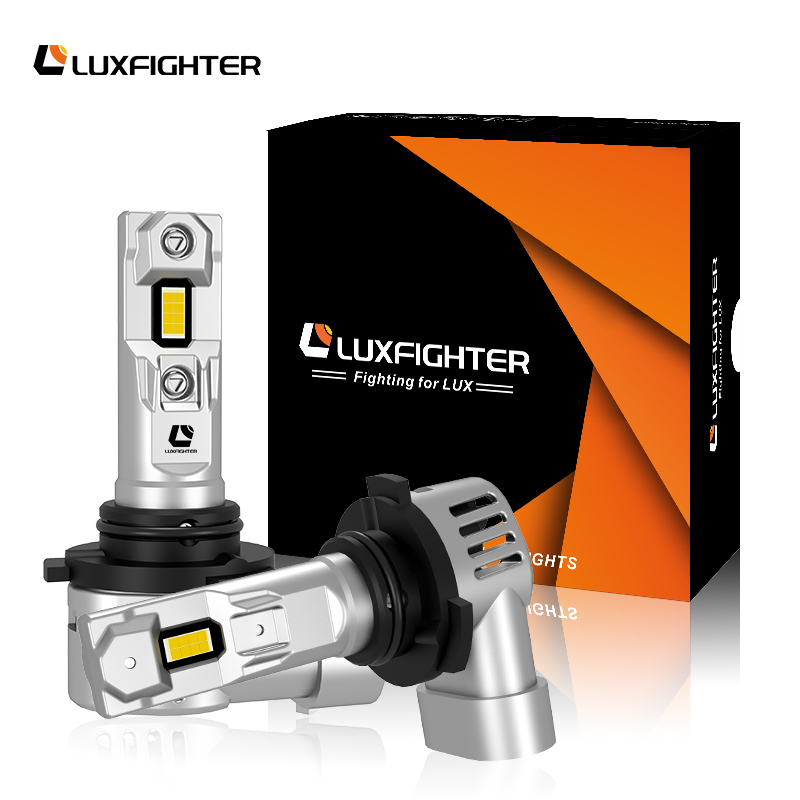The Ultimate Guide to Car LED Headlights: Benefits, Installation, and Maintenance
2024-07-11
Car LED headlights have revolutionized automotive lighting, offering superior brightness, energy efficiency, and longevity compared to traditional halogen and HID headlights. In this comprehensive guide, we'll explore the benefits of LED headlights, provide a step-by-step installation guide, and offer tips for maintaining them to ensure optimal performance.

Benefits of Car LED Headlights
1. Superior Brightness and Visibility: LED headlights produce a brighter and more focused beam of light, improving visibility on the road and enhancing safety during night driving and adverse weather conditions.
2. Energy Efficiency: LEDs consume less power than halogen and HID headlights, reducing the load on your vehicle's electrical system and potentially improving fuel efficiency.
3. Longer Lifespan: LED headlights can last up to 25,000 hours or more, significantly longer than halogen bulbs, which typically last around 1,000 hours. This reduces the frequency of replacements and associated costs.
4. Instant Illumination: Unlike HID headlights that require a warm-up period, LED headlights provide instant illumination, ensuring maximum visibility as soon as they're turned on.
5. Durability and Reliability: LED headlights are more resistant to shock and vibration, making them ideal for various driving conditions and terrains.
How to Install LED Headlights
Step 1: Gather Necessary Tools and Materials
- LED headlight conversion kit
- Screwdrivers
- Socket set
- Gloves
Step 2: Prepare Your Vehicle
- Park your vehicle on a flat surface and turn off the engine.
- Open the hood and disconnect the battery to ensure safety during the installation process.
Step 3: Remove the Old Headlights
- Locate the headlight assembly and remove any screws or clips holding it in place.
- Carefully disconnect the wiring harness and remove the old headlight bulb from the assembly.
Step 4: Install the LED Headlights
- Insert the new LED headlight bulb into the assembly, ensuring it is securely in place.
- Connect the wiring harness to the new LED bulb. Some kits may require additional wiring or adapters, so follow the manufacturer's instructions carefully.
- Reattach the headlight assembly and secure it with screws or clips.
Step 5: Test the New Headlights
- Reconnect the battery and turn on the headlights to ensure they are functioning correctly.
- Check the alignment of the headlights and adjust if necessary to ensure proper illumination of the road.
Step 6: Close the Hood and Enjoy Your New LED Headlights
Maintenance Tips for LED Headlights
1. Regular Cleaning: Keep the headlight lenses clean to ensure maximum brightness. Use a soft cloth and a non-abrasive cleaner to remove dirt and debris.
2. Check for Condensation: Condensation inside the headlight assembly can reduce the effectiveness of LED headlights. If you notice moisture, check the seals and replace them if necessary to prevent water ingress.
3. Inspect Wiring and Connections: Periodically check the wiring and connections for any signs of wear or damage. Ensure all connections are secure to prevent flickering or loss of illumination.
4. Avoid Overloading the Electrical System: LED headlights consume less power, but adding other high-power accessories can strain the electrical system. Ensure your vehicle's electrical system can handle the additional load.
Conclusion
Upgrading to LED headlights can significantly enhance your driving experience by providing superior brightness, energy efficiency, and longevity. With the right tools and a step-by-step guide, installation can be a straightforward process. Regular maintenance will ensure your LED headlights perform optimally, providing you with safe and reliable illumination for years to come.
---


